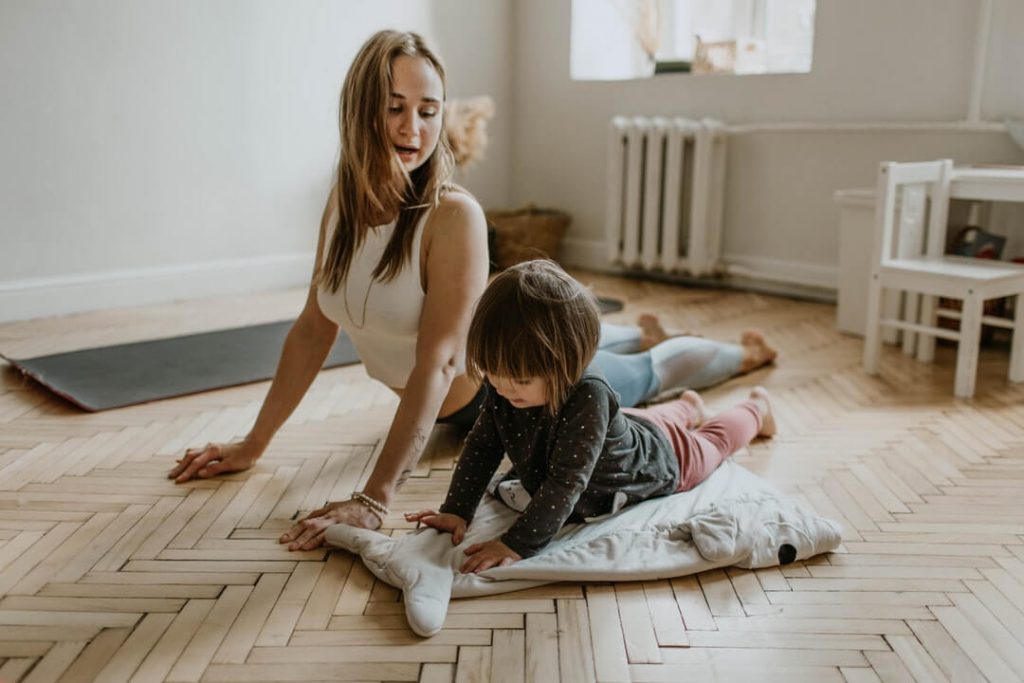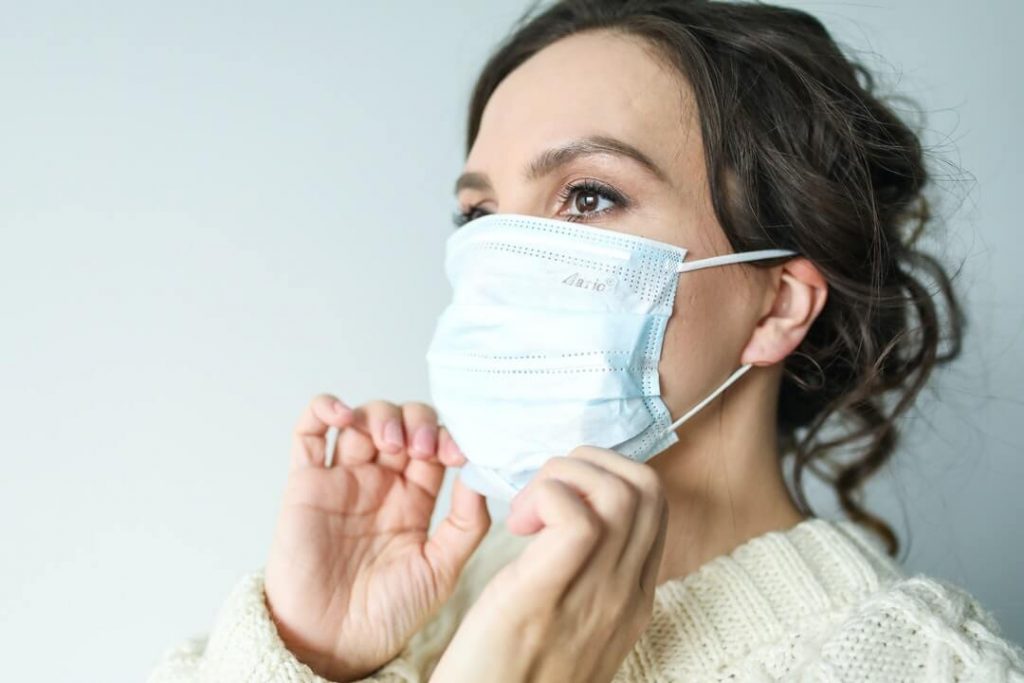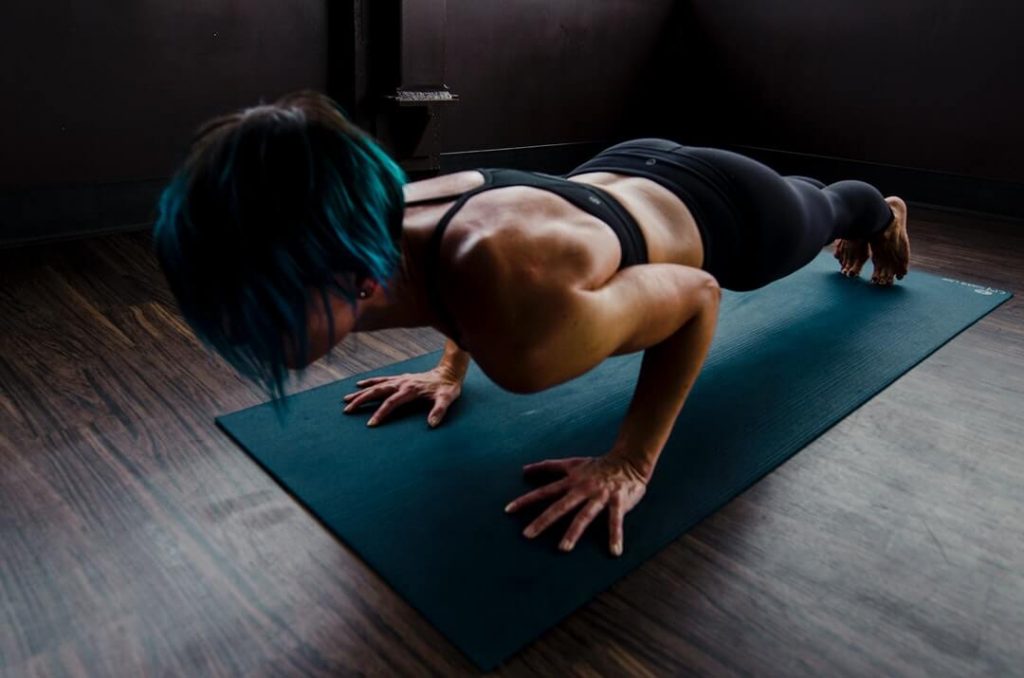In order to stay safe, we all must do our part and stay home. But that doesn’t mean you shouldn’t be active. Here is some vital information about the virus, plus 7 at-home exercises that you can do every day to stay physically fit and healthy while under the Coronavirus Infection Stay-at-Home Order.

Since March 16th 2020 when the White House made an officially announcement of the Coronavirus Task Force’s program, “15 Days to Slow the Spread”, numerous states have created stay-at-home orders in order to slow the spread of the coronavirus COVID-19 through the implementation of strict social distancing guidelines within all aspects of society.
Despite the closures of gyms, dance studios, and other types of non-essential businesses that aid in boosting one’s health, there are still many activities that you may perform to stay physically fit and healthy during the coronavirus infection stay-at-home order.
In this guide, you will learn about the pandemic disease and exercising routines that will provide a boost to your health.

What is the Coronavirus COVID-19?
COVID-19 is directly caused by a coronavirus. These types of viruses are from a large family of unique viruses that are common among people and various animal species – the most common being bats, camels, cats, and cattle. In rare instances, animal-based coronaviruses are capable of infecting and spreading among humans. Examples of past instances include SARS-CoV and MERS-CoV.
It is also the case with this new COVID-19 virus, which is also referred to as “SARS-CoV-2”. All three of these viruses are known as “beta coronaviruses” and originate in bats. All three of these illnesses directly impact humans and are passed from one person to another.
The COVID-19 is a respiratory-based illness that has the capability of spreading from one person to another. Its identification was made during a comprehensive investigation into an illness outbreak in the area of Wuhan, China in December of 2019.
It is currently thought to spread mostly by close person-to-person contact (generally, within 6 feet) through respiratory droplets that are emitted from the body when talking, coughing, and/or sneezing. It may also be spread by touching a contaminated surface and then touching the face.
This coronavirus infection is still being researched and more information is expected to emerge on its details and its spread capabilities.
What are the Symptoms of the Coronavirus Infection?
According to scientists, medical professionals, and other researchers, symptoms associated with the COVID-19 coronavirus may appear anywhere from 2 days to 14 days, following exposure. Initially, the symptoms were identified as “fever”, “cough”, and “shortness of breath/difficulty breathing”; however, as research continues on patients, many other symptoms have been associated with the coronavirus. These include the following:
- The cough that is described with the illness is often referred to as “dry”.
- In recent weeks, it has been discovered that many people suffer from digestive issues such as diarrhea and bouts of nausea.
- Many older individuals that contracted the virus experienced malaise, exhaustion, and even bouts of disorientation.
- There have been instances where a sufferer was difficult to arouse and – upon arousal – showed signs of confusion.
- Many have experienced severe muscle pains and body aches.
- It is common for patients to experience body chills.
- Headache has been reported as a common symptom of those with the coronavirus infection.
- Many have experienced dizziness with the virus.
- Sore throat may develop with the coronavirus COVID-19.
- It seems that may individuals experience a loss of smell and/or a loss of taste.
- Many have developed pink eye and/or the eye lids and under the eyes become red and seem to be inflamed.
- Many have reported pain in the chest when having the coronavirus COVID-19.
Many symptoms are being experienced. Not all sufferers will have all of these symptoms. If breathing difficulty is experienced, a bluish-tint to the lips and/or fingernails is noticed, a fever runs extremely high, a person is difficult to arouse, or another medical emergency occurs, medical attention should be sought IMMEDIATELY. If you have to call 911, be certain to inform the dispatcher that COVID-19 symptoms are present so that the medical personnel may properly protect themselves.
Stay-At-Home Orders
The rapidly spreading coronavirus infection has the health care system in the United States at a tipping point. It is placing a strain on health care workers, the amount of personal protective equipment available, the availability of hospital beds, and ventilators. As a result, most states are ordering residents to stay at home – unless essential provisions are needed. If provisions are needed, the states and federal government is encouraging people to practice social distancing. While each state has their own unique criteria, these orders mean the following:
All non-essential businesses are either closed or ordering non-essential employees to stay at home. Essential businesses are open.
These include those that sell groceries, items for children, medical facilities and hospitals, pharmacies, home improvement stores, restaurants (delivery and take-out only), child care, public health, law enforcement, first responders, convenience stores, farms, those that deal in natural resources, energy, electricity industry, gas and fuel industry, water and wastewater, transportation and logistics, public works, infrastructure support services, and those that are similar in nature.
Gyms and other physical fitness businesses are completely closed as they are not considered to be “essential business”; however, in terms of health, home exercise is critical for your physical health. If you are on a stay-at-home order, it is imperative that you engage in exercise on a daily basis.
Not only will this help keep you physically fit and healthy, it will also provide a boost to your mental health. There are many ways to keep your body moving during the pandemic of 2020. Continue reading to learn about home exercises that should be done on a daily basis.

7 At-Home Exercises to Do Every Day
Squats
To perform a squat, keep the feet flat on the ground. Make sure that the knees are behind the toes. The hips should be below the top of the knee area. Do not round the upper back region. Keep the chest up. Squats help build up the muscle throughout the body.
Dead Bug Exercise
Lie down on the floor on your back and lift the knees to a 90-degree angle. Make sure that the shins are parallel to the floor. Reach the arms up and keep the head and back flat. Reach each hand/arm behind the head and straighten the opposite leg at the same time. Repeat equally. This home exercise will help to improve posture, stabilize the core, strengthen the spine, and boosts the muscles in the back. The balance and coordination will improve.
Glute Bridge
Now that you are home a lot, you probably find yourself sitting a lot. This helps to “wake up” the back and glutes so that you experience less stiffness, pain, and discomfort. Lie on the back with the knees bent. Make sure both feet are on the ground and as close to your rear end as is possible and still be comfortable. Squeeze the glutes, bring the weight onto the heels. Push your hips up towards the ceiling and hold. Gently lower to the ground and repeat.
Walking
There is no need to describe how to do this exercise. We all know how to walk. Despite being under a stay-at-home order, you can still walk around in your home and if it is safe to do so, outside of your home. If you’re tired of workout videos, you can easily walk in place. Many step tracking devices will still record movement. Look into yours.
There are multiple benefits to walking. The most important being it strengthens the heart, eases pain in the body, boosts the immune system, boosts the energy levels of the body, burns calories, reduces blood sugar levels, and extends your life.
Stretching
You should stretch various areas of your body throughout the day. Stretching helps improve your performance in other types of physical activities, decreases the chance that you will develop an injury, helps strengthen the joints, and helps ensure that all of your muscles are working effectively and to their highest capacity.
Push-Ups
Place your body on a mat, with the palms face-down. Make sure the shoulders are over the hands. Stiffen your body and align the head with the spine. Then, lift your body. This home exercise will help you build up the strength in your upper body.
Bicycles
Lie on your back and put your feet in the air. Bend the knees and move the legs in the same way you would if riding a bicycle. This home exercise will help strengthen the legs and the lower body.
Conclusion
We are all affected by the coronavirus infection. Most of us are feeling the impact of the stay-at-home orders. We may be working at home. If we are not working at home, we may be homeschooling our kids or simply sitting around, waiting on this issue to pass.
Why let your health suffer?
There are many at-home exercises you can and should be doing each day at home to ensure that you remain as healthy as possible. We here at Back to Motion can help you make the most of this time. For more information, you may contact us directly by calling: 303-832-5577
